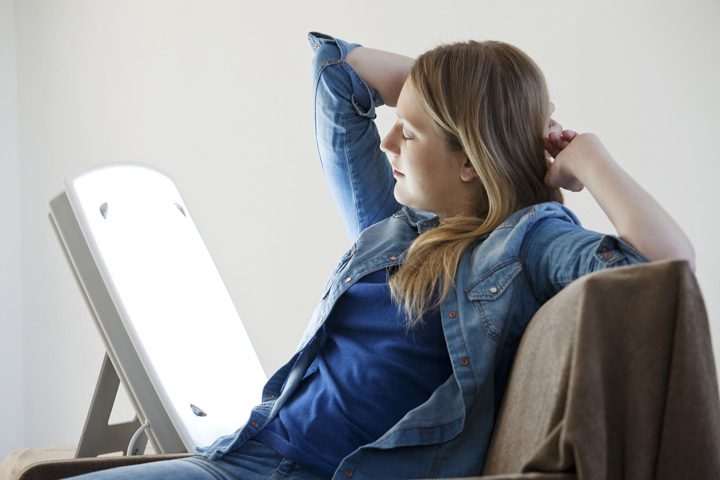
When you feel more down or blue during the winter, it’s quite possible you’re experiencing the aptly-named SAD: seasonal affective disorder. Even in Southern Arizona, where Cottonwood Tucson is located, many people struggle in winter due to shorter daylight hours, among other factors.
What Causes SAD?
Although 10 million Americans experience SAD each year, scientists aren’t exactly sure the reasons why. The National Institute of Mental Health (NIMH) suggests a combination of things:
- Some people might produce less serotonin, one of the “feel good” neurotransmitters that helps regulate mood.Additionally, individuals might create more melatonin, which is responsible for balancing the sleep/wake cycle. Too much melatonin increases sleepiness.
- If both of these brain chemicals are off-kilter, this affects normal daily rhythms, which makes it more challenging to adjust to winter’s shorter days and longer nights.
- While a few foods contain vitamin D, our bodies produce more of it when we’re exposed to sunlight. Less daylight in winter means reduced vitamin D, which affects the immune system and mood modulation.
- For any number of reasons, people might feel a little more despondent or lonely over the holidays or during the winter months in general, especially if their location creates more isolation due to cold and snowy weather.
If you or a family member has a history of major depression or bipolar disorder, these conditions might also be risk factors for SAD.
According to Boston University, women are four times more likely to develop SAD than men.
Is Seasonal Affective Disorder the Same as Depression?
Basically, yes. The American Psychological Association (APA) states that it’s “a type of depression that lasts for a season, typically the winter months, and goes away during the rest of the year. Symptoms of SAD are the same as those of depression. They can vary in severity and often interfere with personal relationships.”
Between September and March, individuals affected by SAD notice changes in:
- Concentration and brain clarity.
- Eating habits, especially an increase in appetite and craving carbohydrates.
- Losing interest in activities you usually enjoy or choosing not to socialize.
- Mood, such as feeling more anxious or depressed.
- Sleep patterns, including sleeping more.
- Temperament, such as being more “snappy” than you normally would.
- Weight management, often gaining more weight than usual.
How does SAD differ from some other types of depression? The APA indicates you’ve established a pattern of the condition if, for at least two consecutive years, you experience the above changes during the fall and winter months but feel better when spring arrives.
Ways to Be More GLAD Than SAD
Just like other forms of depression, if you’ve noticed SAD creeping up on you, there are proactive methods that help you manage it more effectively. We’ll stick with the funky acronym GLAD to help explain.
Get professional help. If you’ve noticed some of the symptoms referenced above, especially if they’re uncharacteristic for you and there’s not an inciting event, talk with your primary care provider about how you feel. If you do have a history of other mental health issues, consult your therapist right away.
Light therapy really makes a difference! A useful and inexpensive SAD therapy since the 1980s, full-spectrum light boxes, usually around 10,000 lux, recreate the benefits of sunlight. The recommendation is to sit by a light box every morning for 30–40 minutes during the winter.
Assistive medications might be necessary in the short term. Depending on the severity, some physicians might suggest that certain patients take a low-dose antidepressant, such as selective serotonin reuptake inhibitors (SSRIs), other types of antidepressants, or even the supplement St. John’s Wort, from September through March.
D. Vitamin D. In studies conducted with people experiencing SAD, results revealed they also had vitamin D deficiency.
We’ll add two more: diet and exercise! (GLADED? No.) Winter superfoods, along with purposeful movement at least 4 days a week, are natural serotonin boosters and help with sleep regulation.
Unfortunately, NIMH states that there’s really no way to prevent SAD without medication, but for many people, the side effects aren’t worth the trouble. So creating a management plan with your physician is usually best.
Better Management of Mental Health at Cottonwood Tucson
Now more than ever, it’s easy to find effective treatment options and minimize symptoms of SAD and other mental illnesses. The process starts by choosing health care providers who are invested in developing a partnership with you dedicated to whole-person wellness. Within this partnership should be the opportunity to explore a balance of holistic and medical care to create long-lasting health. You and your loved ones deserve this type of specialized treatment, so please speak to one of our admissions advisors today to learn how our board-certified professionals can help.






